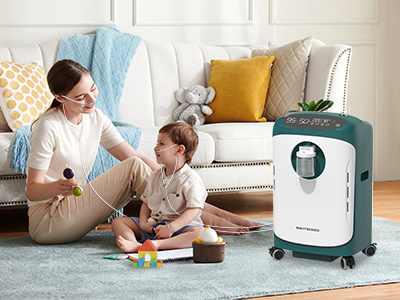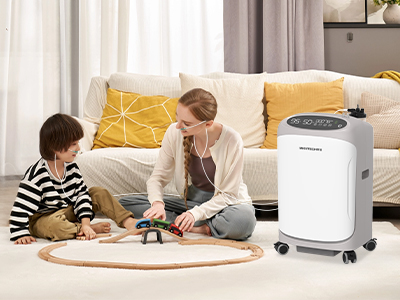16 May 2025
Inside the hushed halls of the Neonatal Intensive Care Unit (NICU), tiny warriors begin their fight. Premature babies—born before 37 weeks of gestation—arrive in the world before their lungs have learned to sing. These infants, some weighing less than a pineapple, depend on the marvel of medical science to do what their bodies cannot yet manage: breathe. Enter oxygen therapy, a life-preserving intervention as vital as it is intricate.

Why Premature Babies Struggle with Breathing
In the womb, lungs are the last major organs to mature. By the third trimester, they begin producing surfactant, a slick, soapy substance that keeps the tiny air sacs (alveoli) open and ready to receive oxygen. Without enough surfactant, the lungs collapse like soggy balloons.
The earlier a baby is born, the more likely their lungs resemble unripe fruit—beautiful, but not quite ready for action. As a result, respiratory distress syndrome (RDS) is common in preemies, demanding swift intervention to prevent oxygen starvation.
What Is Oxygen Therapy?
Oxygen therapy delivers supplemental oxygen to infants whose lungs aren't yet up to the task. It’s not simply about cranking up the airflow. It’s a calibrated, measured process that ensures every breath a baby takes is laced with the right amount of this life-giving gas.
The goal? To maintain optimal oxygen saturation in the blood, ensuring all vital organs—from the brain to the bowels—receive the fuel they need to function and grow.
Types of Oxygen Delivery Methods Used for Preemies
Oxygen can be delivered through various mechanisms, each tailored to the baby's specific condition and size.
Nasal Cannula: A lightweight tube with prongs that fit into the nostrils. Often used for mild respiratory support, it's the least invasive method and allows some mobility.
CPAP (Continuous Positive Airway Pressure): This system gently pushes air into the lungs to keep them open, using a mask or nasal prongs. It’s ideal for babies who can breathe but need a little encouragement.
Mechanical Ventilation: For infants in severe distress, a ventilator may take over breathing entirely. Though life-saving, it's used with caution to minimize long-term lung injury.
Each delivery method is part of a choreography involving nurses, neonatologists, and respiratory therapists—an around-the-clock ballet of life support.
Monitoring Oxygen Levels: A Delicate Balance
Too little oxygen, and the brain suffers. Too much, and sensitive tissues like the retina may be damaged. Striking the perfect balance is like walking a tightrope in a windstorm.
Pulse oximeters—tiny sensors often strapped to a baby’s foot or hand—track blood oxygen levels in real-time. Alarms alert staff when saturation levels drift outside the safe range, typically between 90% and 95%. This dance of data keeps preemies safe in a world where every breath counts.

Potential Risks and Side Effects of Oxygen Therapy
Oxygen therapy, while essential, is not without risks. The most well-known concern is Retinopathy of Prematurity (ROP), a condition where excess oxygen causes abnormal blood vessel growth in the eyes, potentially leading to blindness.
Another concern is Bronchopulmonary Dysplasia (BPD)—a chronic lung disease that can develop after long-term oxygen use or mechanical ventilation. BPD may lead to prolonged respiratory issues, but many children outgrow it with time and care.
The trick lies in delivering just enough oxygen to save, not scorch.
How Oxygen Therapy Supports Long-Term Development
A well-oxygenated baby is a thriving baby. Adequate oxygen in the early days fuels brain development, stabilizes heart rate, and enhances the baby’s ability to eat, sleep, and grow.
A well-oxygenated baby is a thriving baby. Adequate oxygen in the early days fuels brain development, stabilizes heart rate, and enhances the baby’s ability to eat, sleep, and grow.
Parental Role in the NICU Journey
The NICU can be an emotional jungle for parents—buzzing machines, clinical jargon, and fragile infants behind incubator glass. But parents play a crucial role in the oxygen therapy journey.
From kangaroo care (skin-to-skin contact) that improves oxygenation to advocating for care decisions, their involvement is vital. Asking questions, learning how monitors work, and staying engaged can make the NICU stay less intimidating—and more empowering.
Transitioning from Oxygen Support
As lungs mature and surfactant production kicks in, babies begin to take over the work of breathing. The process of weaning from oxygen is gradual and closely monitored.
Some infants go home with portable oxygen tanks or concentrators, and parents are trained in their use. Others transition fully before discharge. Warning signs like persistent rapid breathing or bluish skin will dictate whether support continues at home.
The goal is to reach a day when the air they breathe needs no artificial help.
Conclusion: Breathing Hope into Tiny Lives
Oxygen therapy is more than a medical intervention—it’s a bridge between vulnerability and vitality. For premature babies, each assisted breath is a small miracle. Thanks to relentless innovation and vigilant care, these fragile newborns are increasingly going home strong, stable, and ready for life’s next chapter.
When breath is borrowed from science, life can blossom where it once struggled to begin.
Keywords: oxygen therapy
Originally published 16 May 2025, updated 16 May 2025.